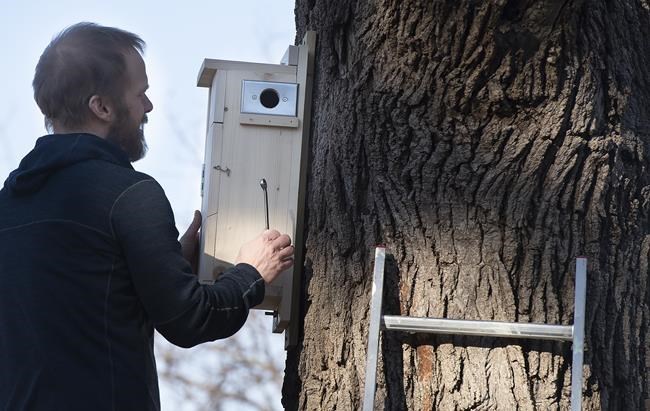LINCOLN, Neb. (AP) — A crew cutting down a dying oak at the University of Nebraska made a surprising find — flying squirrels.
A video shot by a member of the crew made its way to Larkin Powell, a conservation biology professor. The Lincoln Journal Star reports that he was surprised by what he saw — the only remaining Nebraska population of the nocturnal and tiny animals was 90 miles away in Nebraska's southeast corner, near Indian Cave State Park.
It turns out the flying squirrels had been living undetected — until now — in the treetops just above the animal experts at the university’s School of Natural Resources in Lincoln. The crew made the discovery earlier this month, the newspaper reported.
Powell was surprised by their presence, if not by their elusiveness.
“It’s among the species that’s harder to document because they’re not out when people are around,” he said. “And they’re little dudes.”
The National Wildlife Federation says on its website that flying squirrels don't really power themselves into flight like a bird or a bat, but rather glide. The federation says the southern flying squirrel is found throughout the eastern United States, while the northern flying squirrel is found primarily in the Northeast, along the West Coast, and into Idaho and Montana.
Still, Shaun Dunn, a natural heritage zoologist for the state of Nebraska, was not surprised by the Lincoln flying squirrels. He has documented 15 confirmed sightings since 2018.
Dunn isn't sure how the flying squirrels got to Lincoln but said it's "very unlikely they made it here on their own.”
Don Althoff, who earned his master’s degree at the university in 1978 and is now a semi-retired wildlife conservation professor at Ohio’s University of Rio Grande, has been studying southern flying squirrels for nearly 30 years. He’s watched them glide 40, 50, even 75 yards.
Though graceful in the air, the animals are awkward on the ground. Because their sail-like flaps run from wrist to ankle he said they move more like a hobbled horse.
The Associated Press



